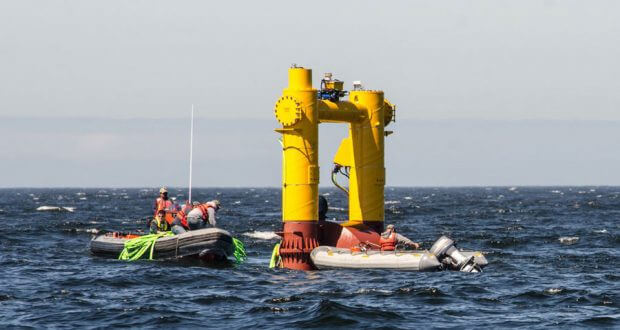From Guest Blogger Emma Joyce: Introduction to Renewable Energy Sources

What is renewable energy?
Most people have heard of the term “renewable energy”, but not many know exactly what it means. To put it simply, renewable energy is the type of energy obtained from renewable sources – the sources that can never run out, like wind or water.The fossil fuels that we normally use are being formed every day as well, but the problem is that we are using them much faster than they can actually be formed. This means that one day, the demand will outgrow the supply. On the other hand, we can never use up all the wind or all the solar energy, which is why, eventually, it will become a more affordable option. As a matter of fact, renewable energy systems are becoming more efficient and cheaper by the day. More and more people are using them, and it is expected that after 2020, the consumption of coal and oil will drastically decrease thanks to the increased consumption of renewables. Moreover, the renewable energy sources exist all over the planet in one form or the other, while fossil fuels can only be gathered from a limited number of locations.
What are the types of renewable energy?
There are many types of renewable energy and each of them has its advantages and disadvantages, depending on where you live and which source is best suitable for your area. Here are some of them.
Hydroelectric power
This type of energy implies using water’s motion to generate power. It’s not a new concept and most countries do use it in some way. It’s mainly produced by using dams to control the flow of water. Also, it is one of the least costly forms of energy, and it’s very clean since there is are no carbon emissions after the initial constructions of the dams. Finally, it’s not just about the production of energy – dams can also regulate the water supply in the area, which is especially helpful during floods and droughts.
Solar power
As long as the Sun is shining, we will be able to use its heat for both electric and thermal needs. Solar electric power implies converting sunlight into electricity by using solar cells. Solar thermal power, on the other hand, implies absorbing the heat by using solar hot water systems. If these sound like something you could use, there are many high-quality SMA inverters that can fit any solar power system.
Wind power
The power of wind can best be seen in the example of ships with sails. However, nowadays, it is mostly harnessed by using wind turbines. Also, the majority of wind farms are actually placed at sea because there are more winds above large bodies of water. Plus, the landscape is “flat”, so it doesn’t make the winds weaker, which means that there’s a greater potential to harness this type of energy.
Biofuel and biomass
Biofuel is the type of fuel produced from plants and other organic material. It can be made by extracting the natural oils from raw plant material, or by extracting decomposing material that is a result of natural anaerobic processes. Biomass, on the other hand, is organic material and not a byproduct. It includes grass, leaves, chopped wood, animal waste, etc.
Geothermal energy
This refers to the heat energy that exists under the surface of our planet. It is a result of natural geological processes like volcanic activity and heat loss. Hot springs are a great example of this type of energy, and they used to be used not just for taking baths but also for heating local houses.
What are the benefits?
Renewable energy sources require less money and effort to maintain, since there are very few – if any – parts that need to be moved and assembled. This also means that the structures built for generating the energy are less likely to break down or get damaged. Renewables are also much more economical, which means that there is less pollution, and less harm to the environment. Moreover, since they are renewable after all, they are more suitable for long-term use.
Many countries are doing their best to reduce carbon emissions and protect the nature, but still, there’s only so much that can be done. As long as the population is growing, the need for energy will grow, which is why the future of our planet greatly depends on the kind of energy we will use in the generations to come.
